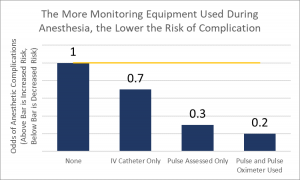-
Recent Posts
Archives
- October 2022
- August 2022
- May 2022
- March 2022
- January 2022
- December 2021
- September 2021
- July 2021
- June 2021
- May 2021
- April 2021
- February 2021
- January 2021
- November 2020
- October 2020
- September 2020
- June 2020
- April 2020
- March 2020
- February 2020
- January 2020
- December 2019
- November 2019
- October 2019
- September 2019
- June 2019
- March 2019
- February 2019
- January 2019
- December 2018
- November 2018
- October 2018
- August 2018
- July 2018
- June 2018
- May 2018
- April 2018
- March 2018
- February 2018
- January 2018
- December 2017
- November 2017
- October 2017
- September 2017
- August 2017
- July 2017
- June 2017
- May 2017
- April 2017
- March 2017
- February 2017
- January 2017
- December 2016
- November 2016
- August 2016
- July 2016
- June 2016
- May 2016
- April 2016
- March 2016
- February 2016
- January 2016
- December 2015
- November 2015
- October 2015
- September 2015
- August 2015
- July 2015
- June 2015
- May 2015
- April 2015
- March 2015
- December 2014
- June 2014
- May 2014
- April 2014
- November 2013
- September 2013
- August 2013
- July 2013
- June 2013
- May 2013
- March 2013
- January 2013
- November 2012
- October 2012
- July 2012
- December 2011
- November 2011
- October 2011
- September 2011
- August 2011
- July 2011
- June 2011
- May 2011
- April 2011
- March 2011
- February 2011
- January 2011
- December 2010
- November 2010
Categories
Is Anesthesia Safe for My Pet
Fear of anesthesia is often cited as a reason why pet parents hesitate to put their dog or cat under for a procedure. Although risks inherent to anesthesia do exist for veterinary patients, the chance of death from anesthesia is low in healthy cats and dogs undergoing routine elective procedures. The chances of death in healthy cats and dogs are less than 0.1 percent and the chances of death in sick cats and dogs is less than 1.5 percent.
A study of cats under anesthesia reported that anesthetic risk decreases with adequate monitoring of the patient’s vitals and blood oxygenation levels. In an effort to minimize risk to our patients, we at NorthStar VETS adhere to current veterinary anesthesia standards by implementing diligent monitoring of patient vitals. Standard monitoring includes pulse rate, blood pressure, respiratory rate, mucous membranes and capillary refill time, temperature, ventilation (measuring exhaled carbon dioxide), blood oxygen levels, and EKGs.Because anesthetic risk is associated with the health status of patients, we recommend pre-operative bloodwork in our patients to complement the results of our physical examination to better assess our patient’s health status prior to anesthesia. Diagnostic tests sometimes help us identify hidden diseases so you can make an informed decision about your pet’s health.
While old age is not a disease, geriatric patients commonly present with additional diseases that can predispose them to anesthetic complications. Many of the patients that come to NorthStar VETS are older and sick. This sub-population of patients therefore will benefit most from a thorough pre-anesthetic diagnostic workup. Surgery and anesthesia nurses at Northstar VETS benefit from the support of specialists in Surgery, Internal Medicine, Cardiology, and Emergency and Critical Care to improve the safety of anesthesia in our higher-risk patient population. We are able to tailor our anesthesia protocols to an individual pet’s needs to ensure the safest anesthetic experience possible.Learn more about the different services at NorthStar VETS.
This entry was posted in Pets, Veterinary Medicine and tagged anesthesia risks for pets, NorthStar VETS, Veterinary Anesthesia. Bookmark the permalink.
2 Responses to Is Anesthesia Safe for My Pet
-
Pingback: Cool Case Ceili | NorthStar VETS







I like that you pointed out that the animal should be monitored when under anesthesia to ensure that they are safe and treated when risks appear. I will keep this in mind now that we are going to have our own veterinary clinic. We will be buying pieces of equipment and other needed supplies for it and also hire a professional vet once the construction of the establishment is finished. I just decided to invest in this for my future because I am quite an animal lover ever since I was a kid.